The following analysis of select counties of the Colorado real estate market is provided by Windermere Real Estate Chief Economist Matthew Gardner. We hope that this information may assist you with making better-informed real estate decisions. For further information about the housing market in your area, please don’t hesitate to contact your Windermere Real Estate agent.
Regional Economic Overview
Though statewide job growth continues to taper in Colorado, more than 108,000 jobs have been added over the past 12 months, representing an annual growth rate of 3.9%. The unemployment rate in August stood at a healthy 3.4%. Regionally, unemployment rates ranged from a low of 2.6% in Boulder to a high of 3.7% in the Grand Junction and Greeley metropolitan areas.
Colorado Home Sales
❱ In the third quarter, 10,749 homes were sold, which is a drop of 27.8% from a year ago. Sales were 16.3% lower than in the second quarter of 2022.
❱ Year over year, sales rose in Gilpin County but fell in the balance of the region. Sales increased in Gilpin, Clear Creek, and El Paso counties over the second quarter.
❱ Inventory levels jumped 73.1% in the third quarter, which is significant even though it is a slower pace of growth than occurred between the first and second quarters.
❱ Pending sales, which are an indicator of future closings, dropped 22.3% from the second quarter. Placed alongside rising inventory levels and lower sales activity, this clearly suggests that the market is pulling back rather quickly following the remarkably buoyant period between 2020 and 2021.
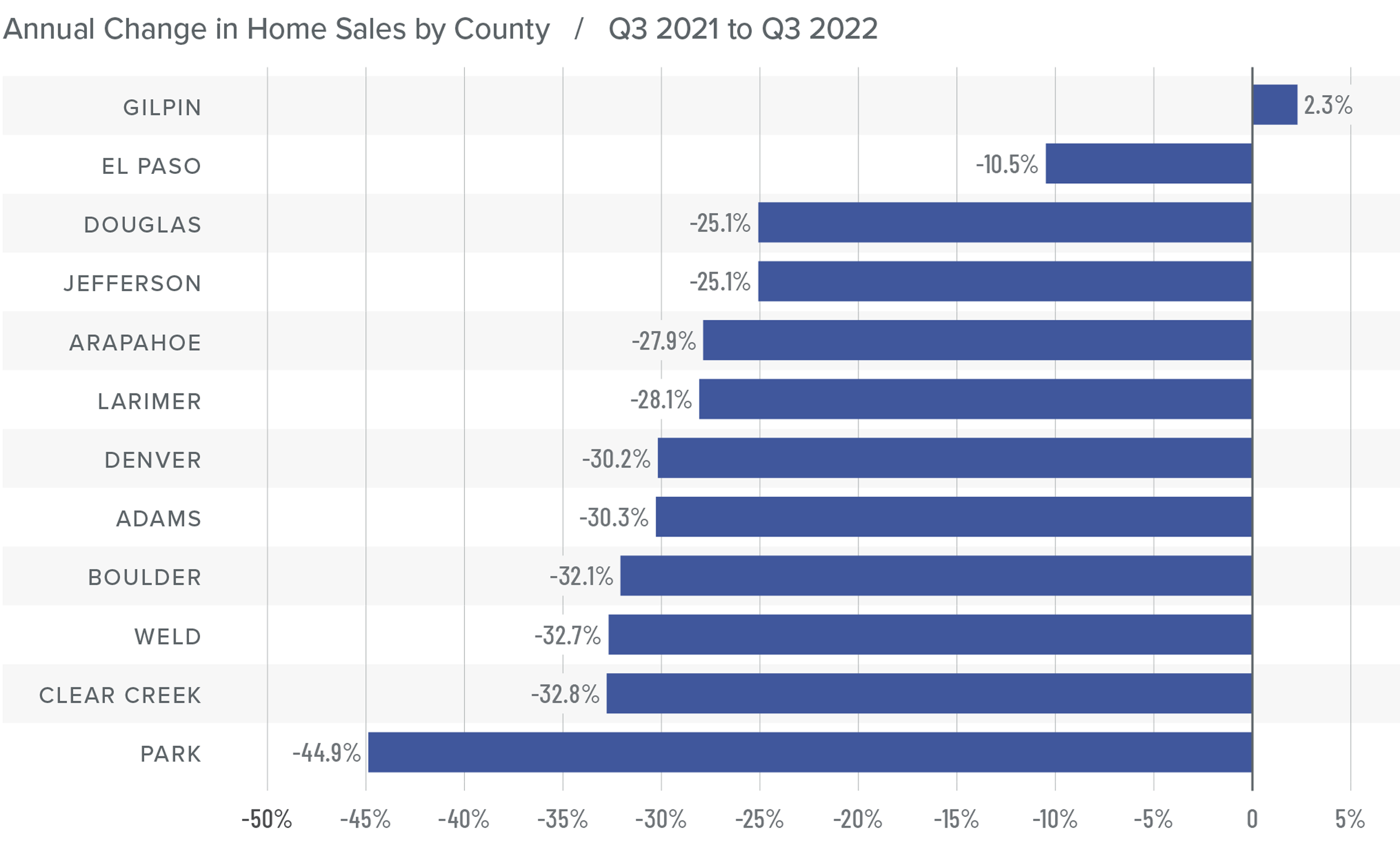
Colorado Home Prices
❱ The average home sale price rose 8.3% from the same period in 2021 to $654,425. However, prices were 6.6% lower than in the second quarter.
❱ Compared to the second quarter, listing prices dropped in all counties except Clear Creek and Gilpin, suggesting that sellers are starting to realize that the market has shifted.
❱ Year over year, prices rose by double digits in Clear Creek and Douglas counties and rose by single digits in the rest of the market areas.
❱ Rising mortgage rates and inventory levels are now impacting the region’s housing market. As stated in the second quarter Gardner Report, any palpable drop in listing prices is an indication that the market is softening, which has proven to be the case.
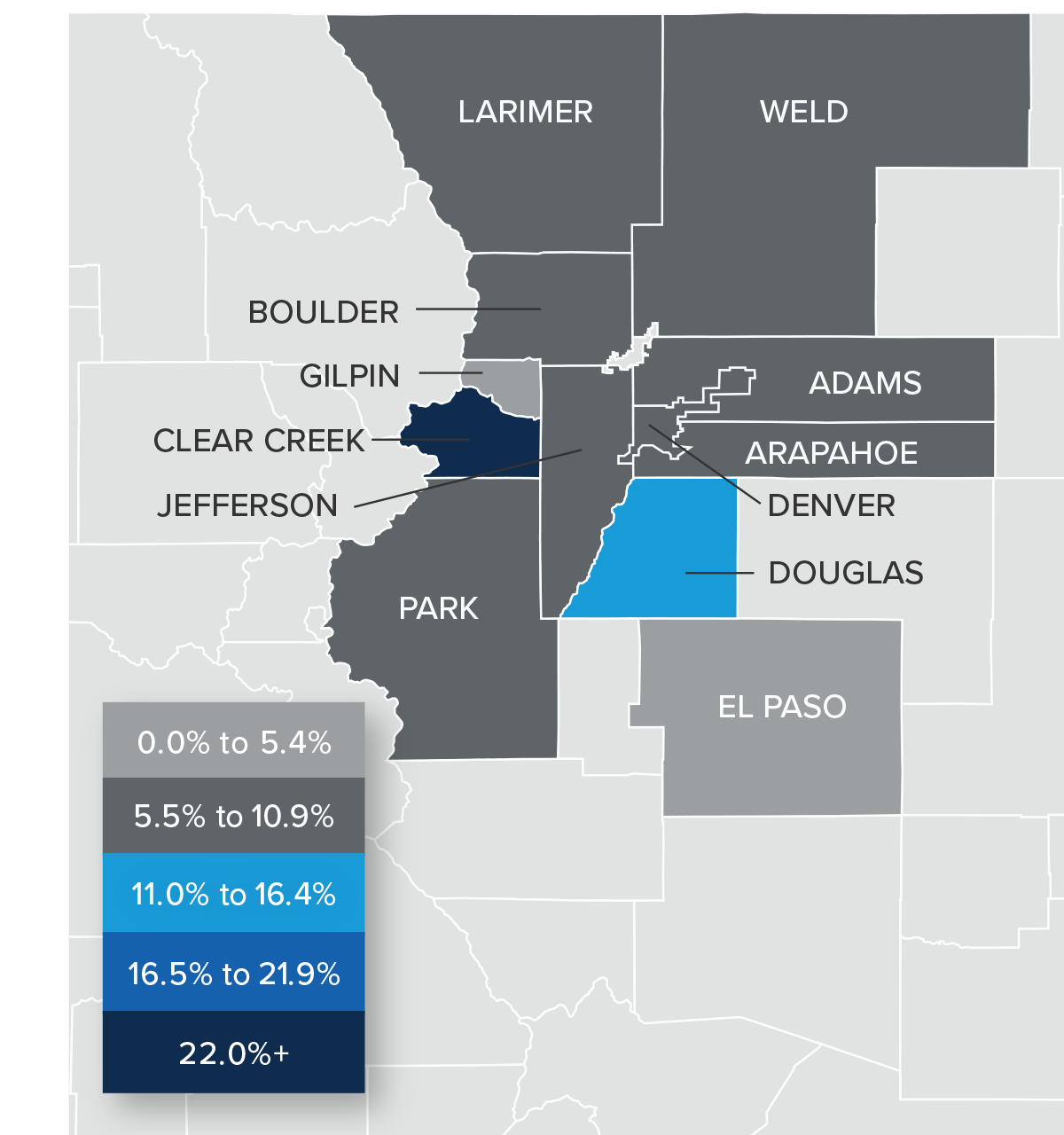
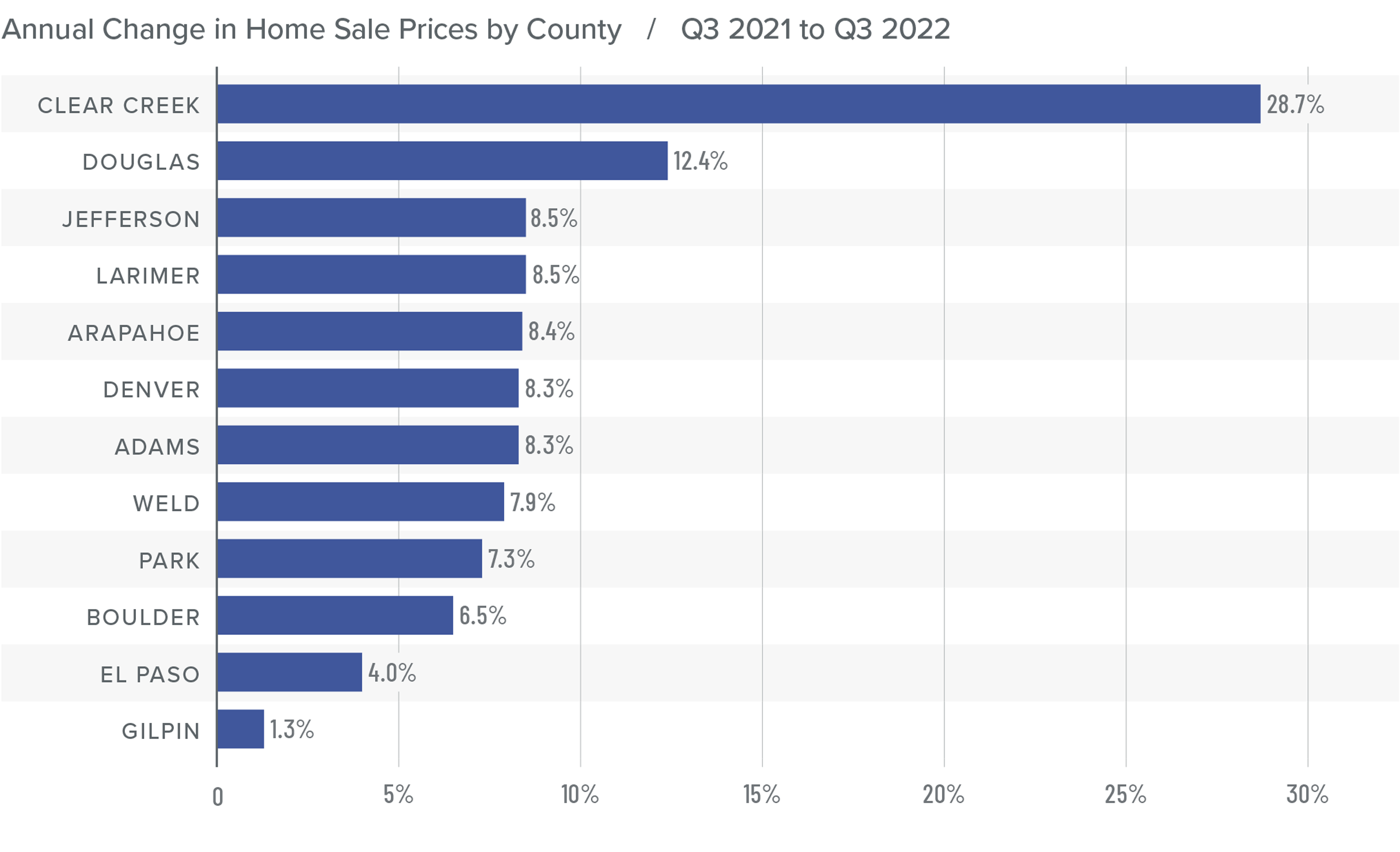
Mortgage Rates
This remains an uncertain period for mortgage rates. When the Federal Reserve slowed bond purchases in 2013, investors were accused of having a “taper tantrum,” and we are seeing a similar reaction today. The Fed appears to be content to watch the housing market go through a period of pain as they throw all their tools at reducing inflation.
As a result, mortgage rates are out of sync with treasury yields, which not only continues to push rates much higher, but also creates violent swings in both directions. My current forecast calls for rates to peak in the fourth quarter of this year before starting to slowly pull back. That said, they will remain in the 6% range until the end of 2023.
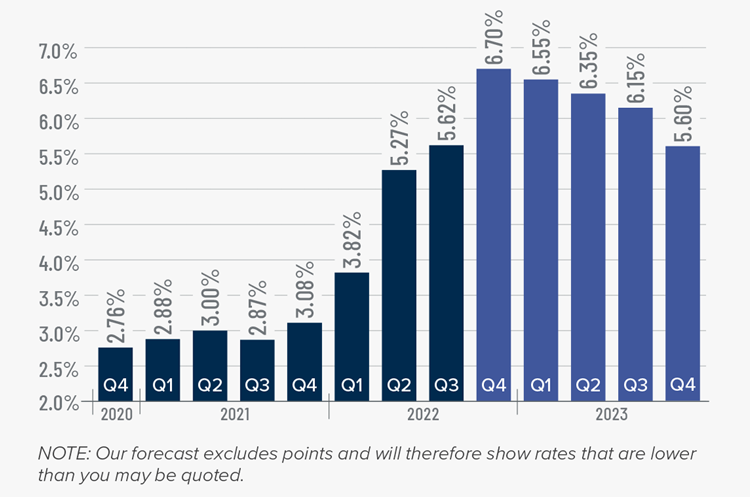
Colorado Days on Market
❱ The average number of days it took to sell a home in the markets contained in this report rose eight days compared to the same period in 2021.
❱ The length of time it took to sell a home rose across the board compared to the same quarter a year ago.
❱ It took an average of 20 days to sell a home in the region, which is up 11 days compared to the second quarter of the year.
❱ Although market time has risen significantly, it is worth noting that the average time it took for a home to sell in the quarter was still ten fewer days than in the third quarter of 2019.
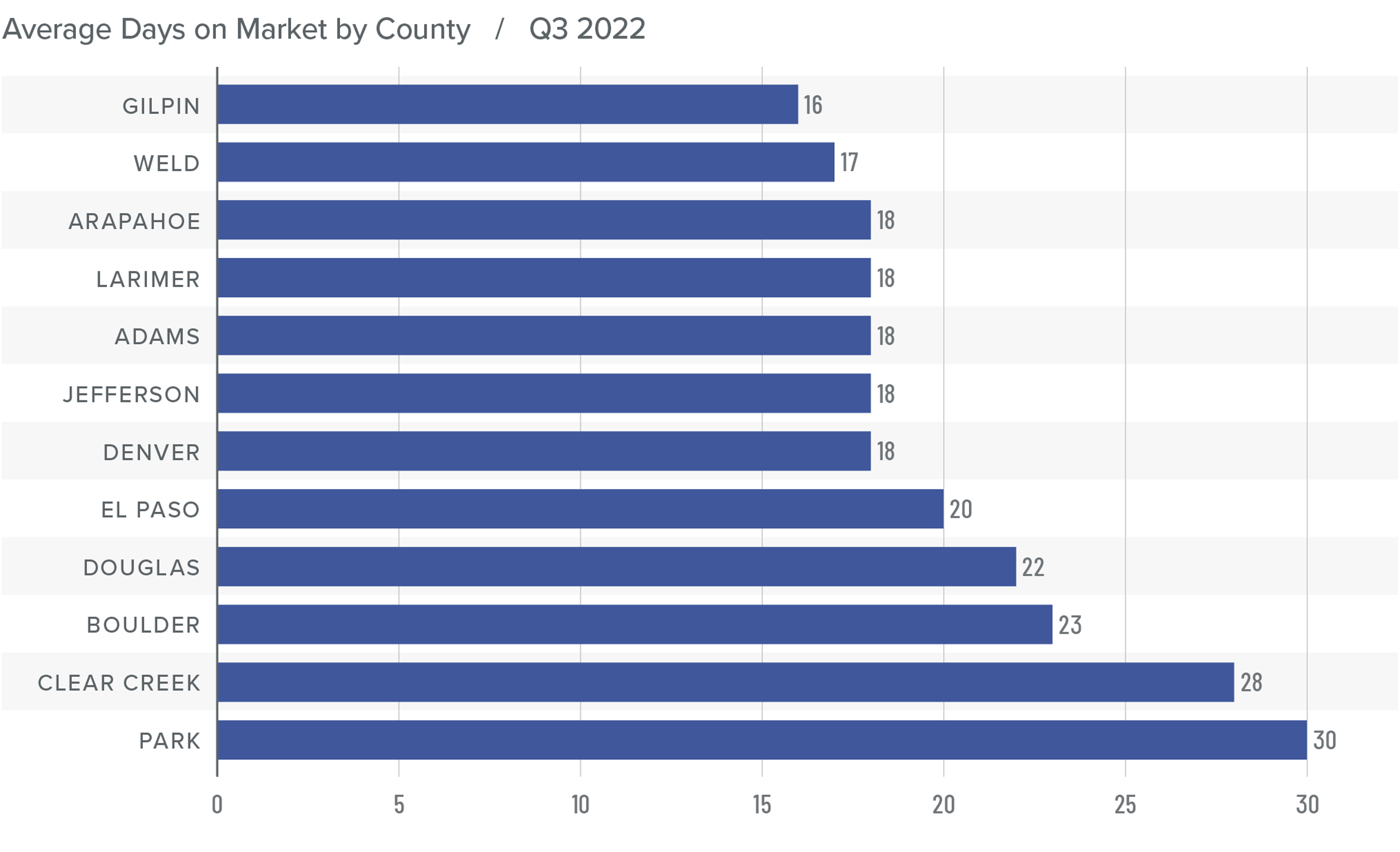
Conclusions
This speedometer reflects the state of the region’s real estate market using housing inventory, price gains, home sales, interest rates, and larger economic factors.
Although all jobs that were lost during the pandemic have now returned and 54,700 new jobs have been added, this has not saved the housing market from cooling. Some are suggesting that we are heading into a period similar to the bursting of the housing bubble in the mid-2000s, but I don’t agree. Through the pandemic, the housing market was artificially inflated by historically low mortgage rates, not by underqualified buyers, but such favorable financing could not carry on forever.

I expect the market will continue to slow until it gets to a sustainable level of growth. Some markets will see annual price growth turn negative. Given that 57% of Colorado homeowners with a mortgage have more than 50% equity, a modest drop in values is nothing to be concerned about. With more supply and list prices pulling back, I am moving the needle more toward balance. This will favor buyers, but the market is still far from being totally in their favor.
About Matthew Gardner

As Chief Economist for Windermere Real Estate, Matthew Gardner is responsible for analyzing and interpreting economic data and its impact on the real estate market on both a local and national level. Matthew has over 30 years of professional experience both in the U.S. and U.K.
In addition to his day-to-day responsibilities, Matthew sits on the Washington State Governors Council of Economic Advisors; chairs the Board of Trustees at the Washington Center for Real Estate Research at the University of Washington; and is an Advisory Board Member at the Runstad Center for Real Estate Studies at the University of Washington where he also lectures in real estate economics.
 Facebook
Facebook
 X
X
 Pinterest
Pinterest
 Copy Link
Copy Link



